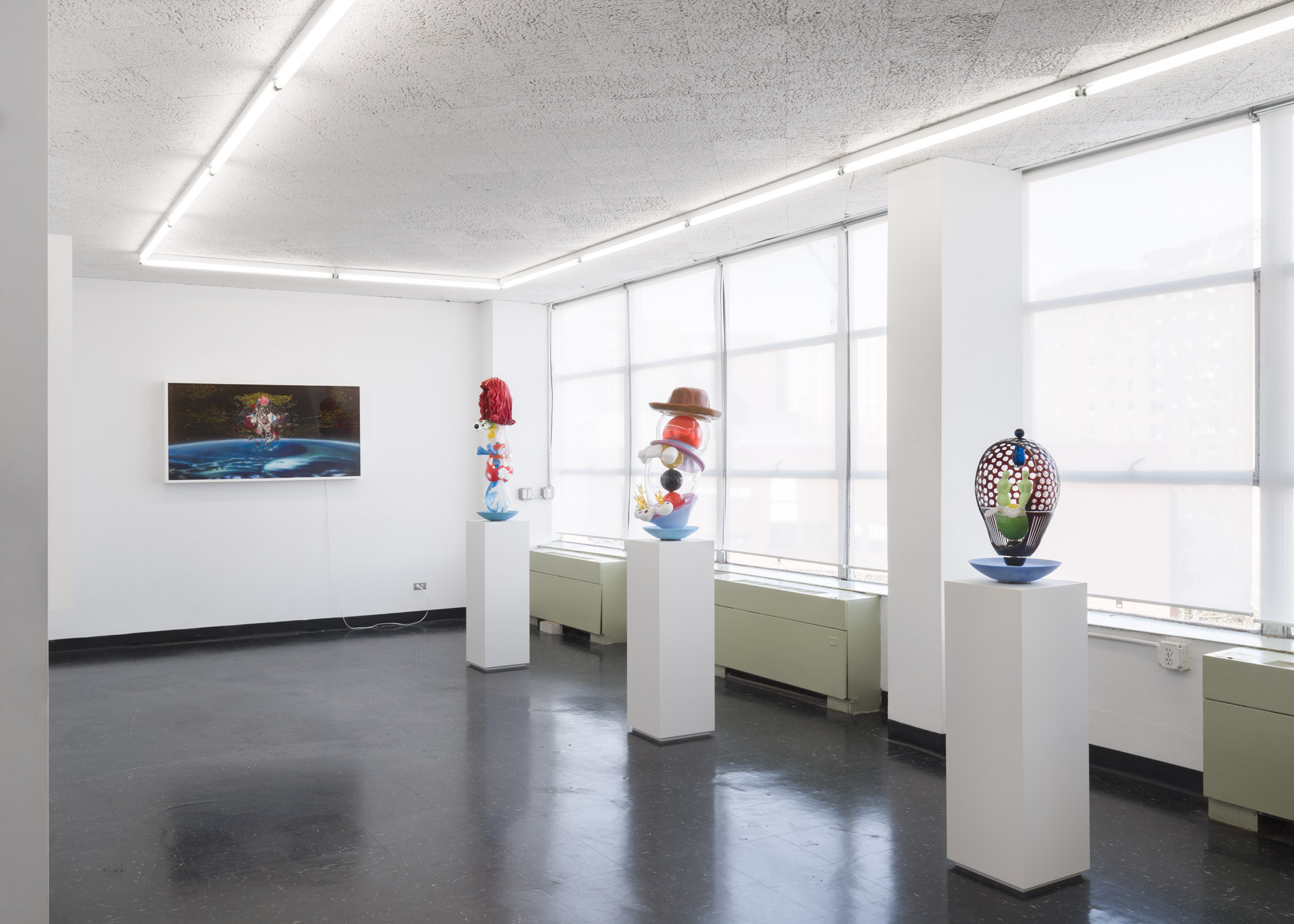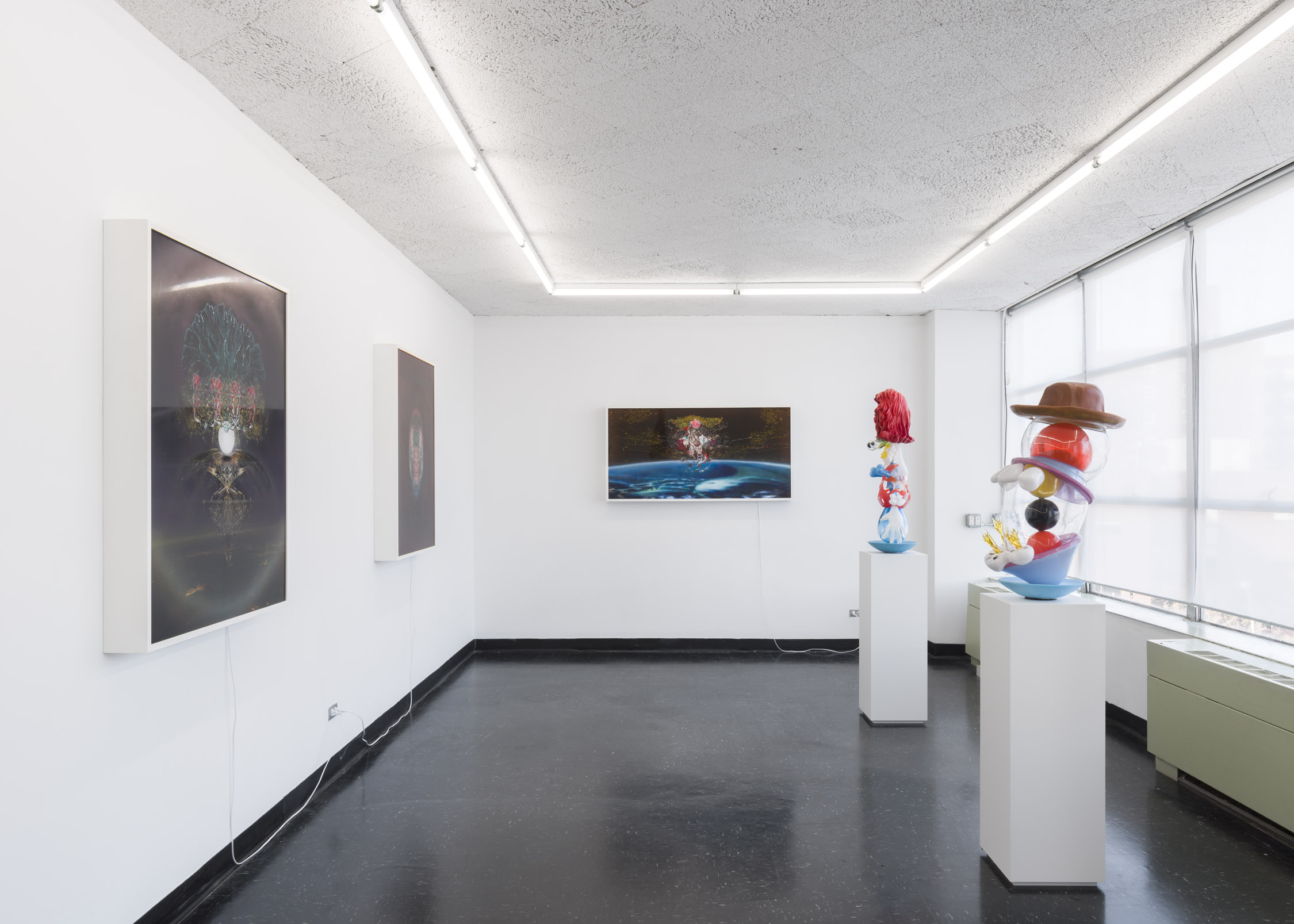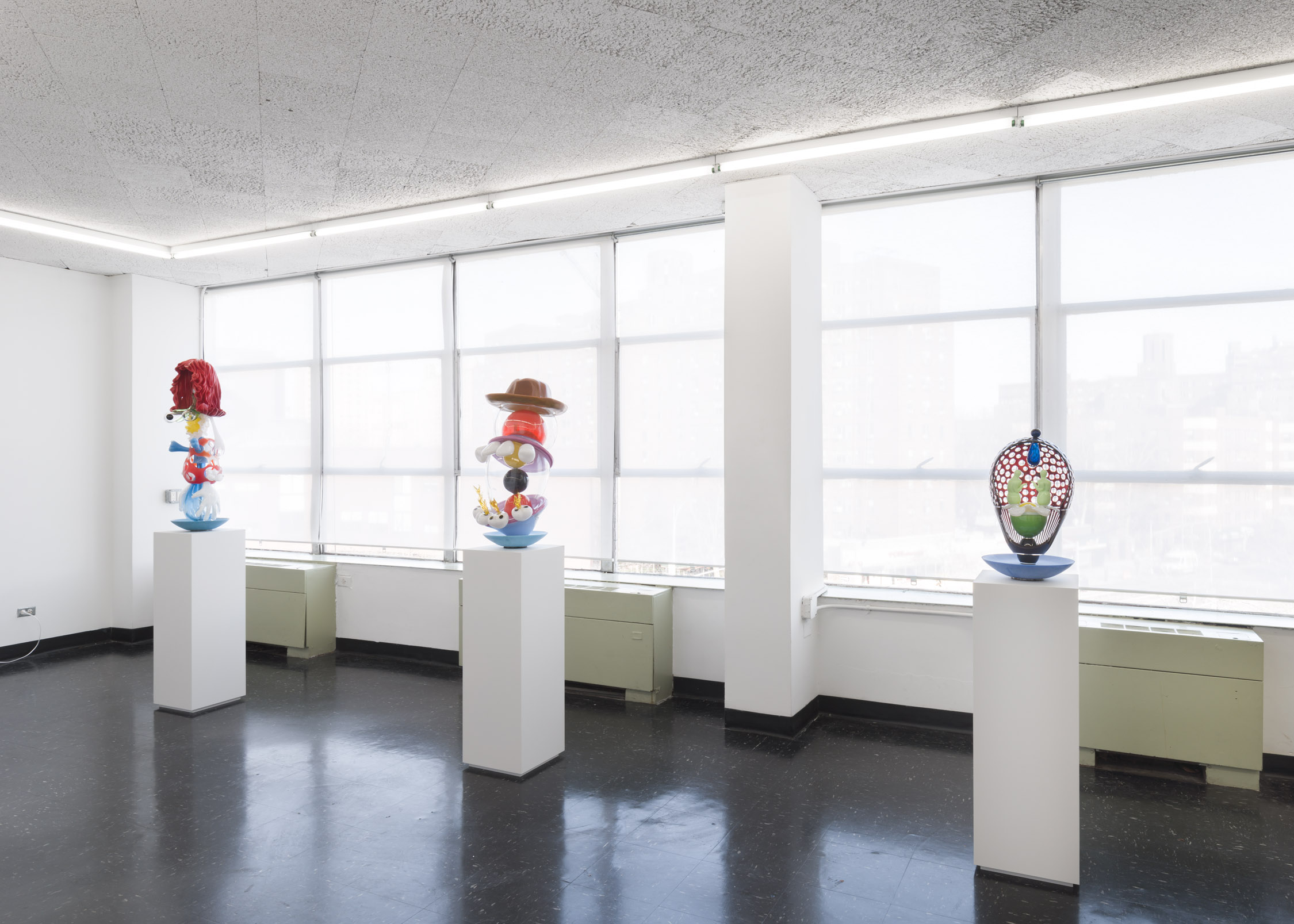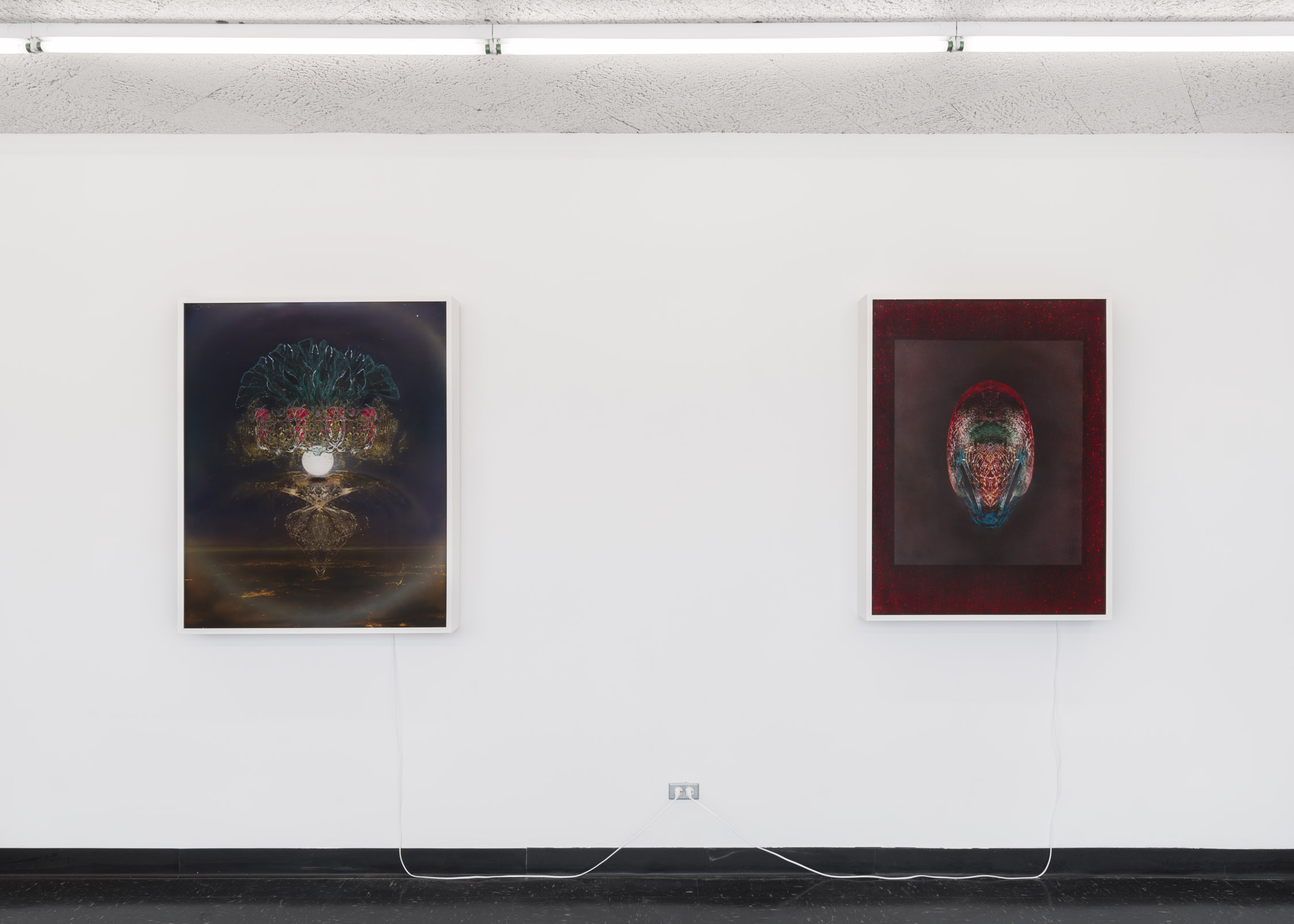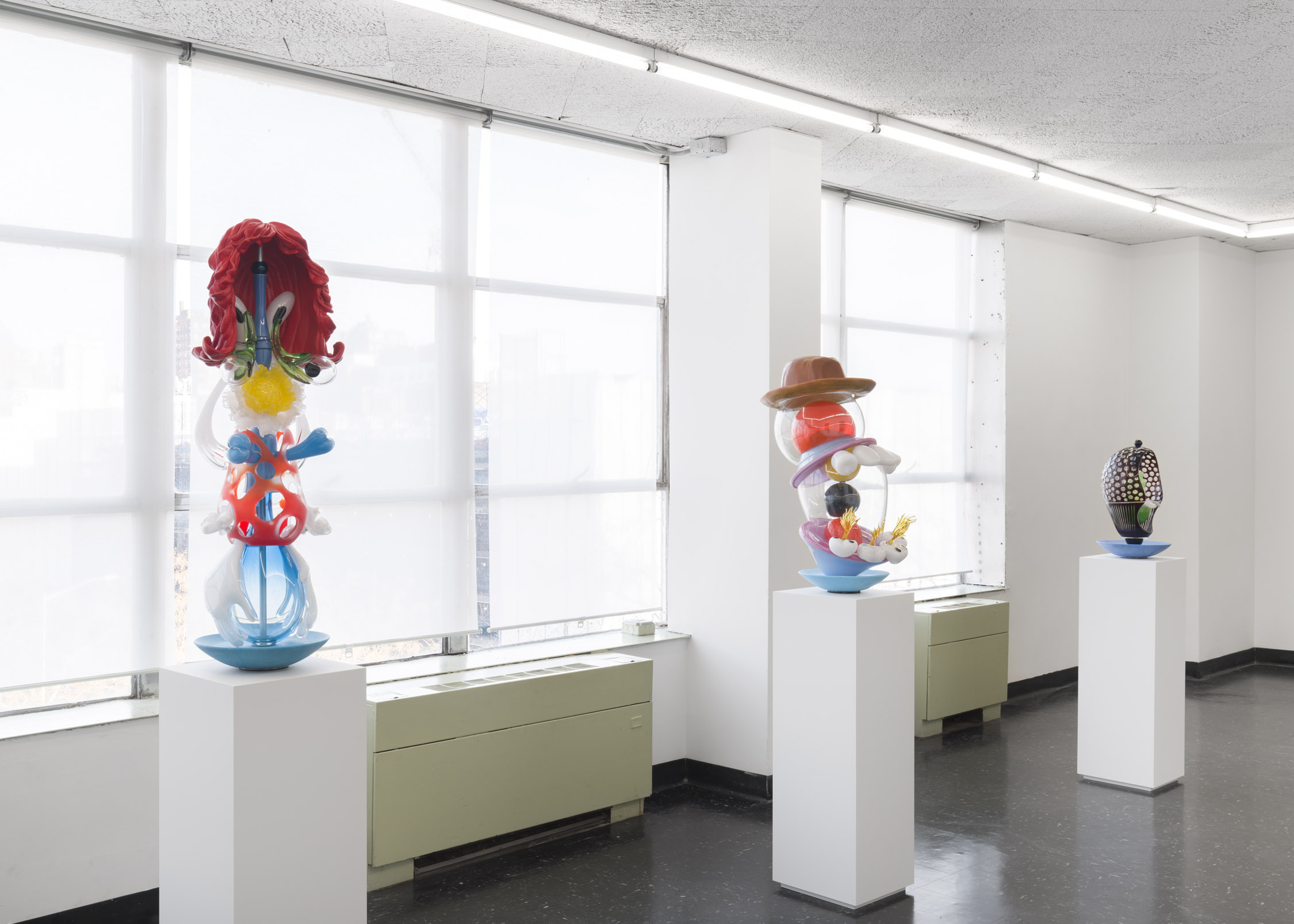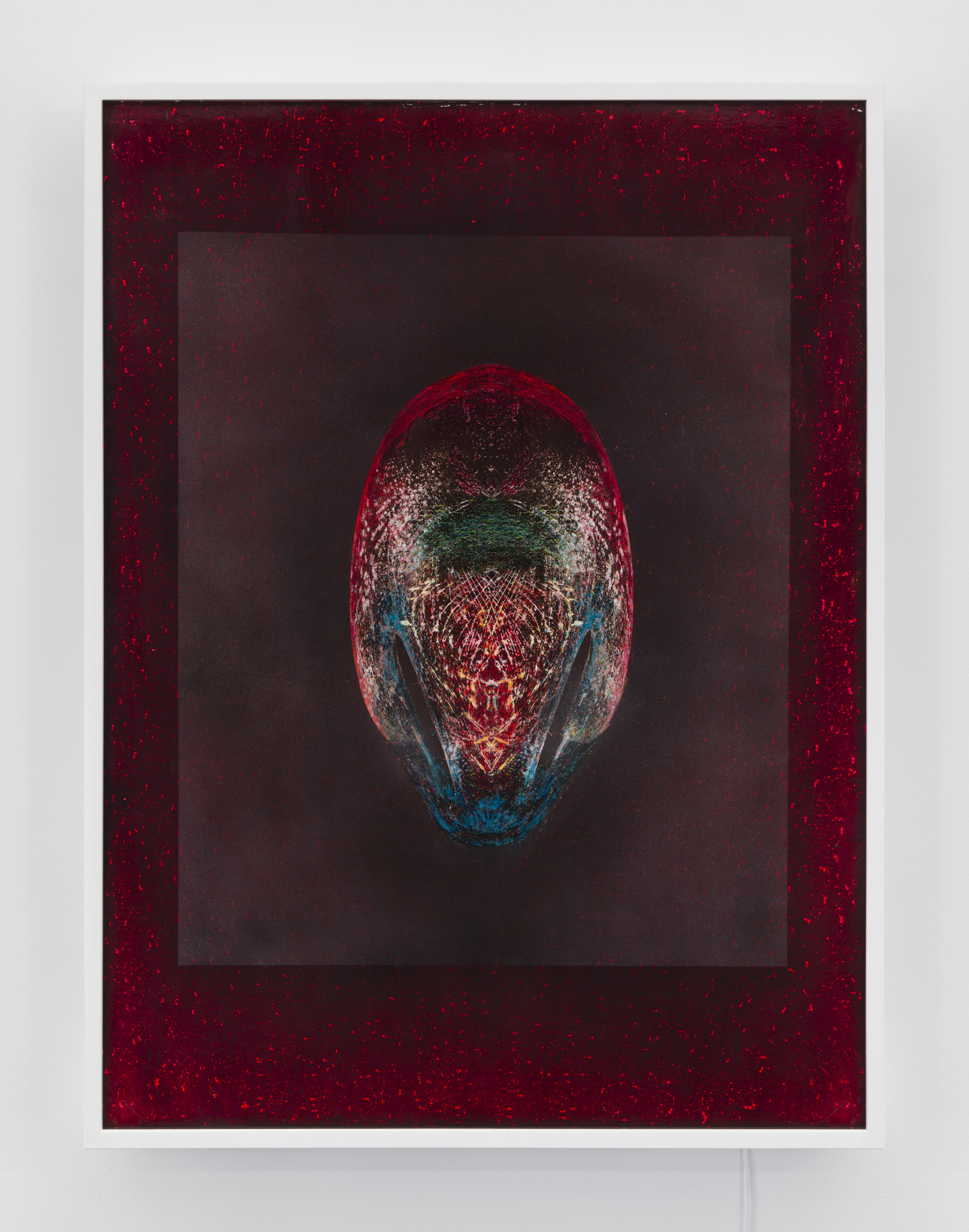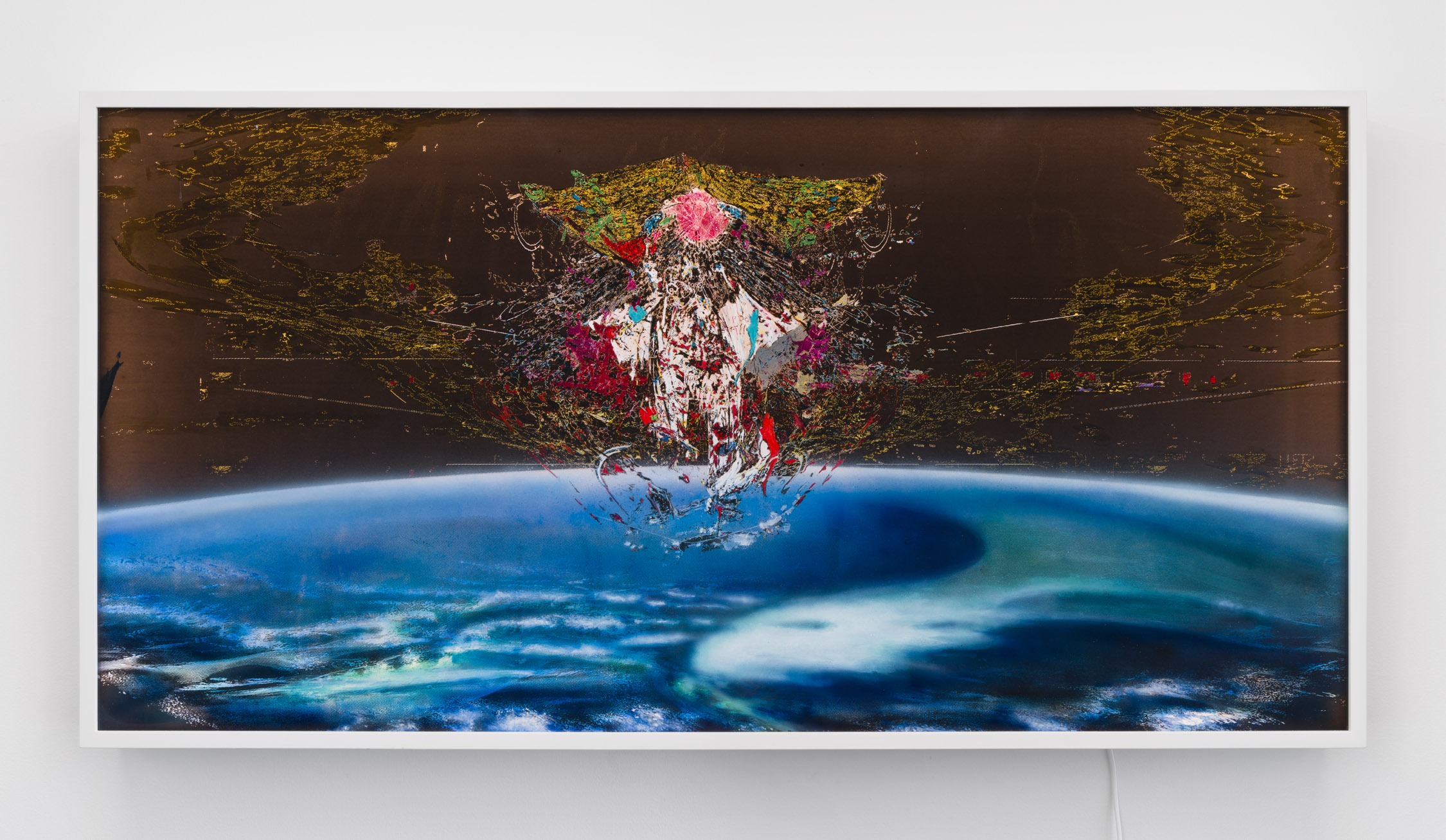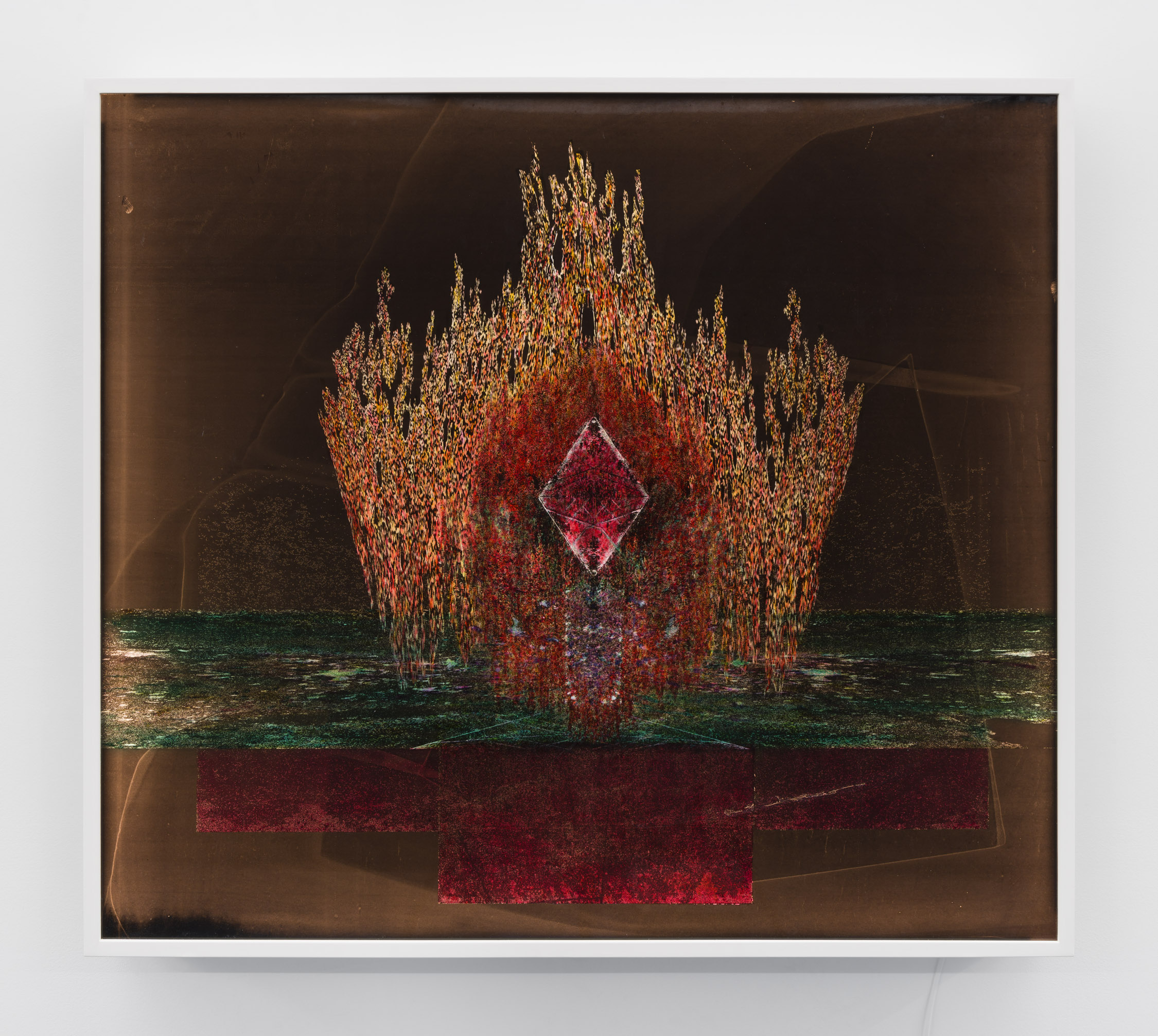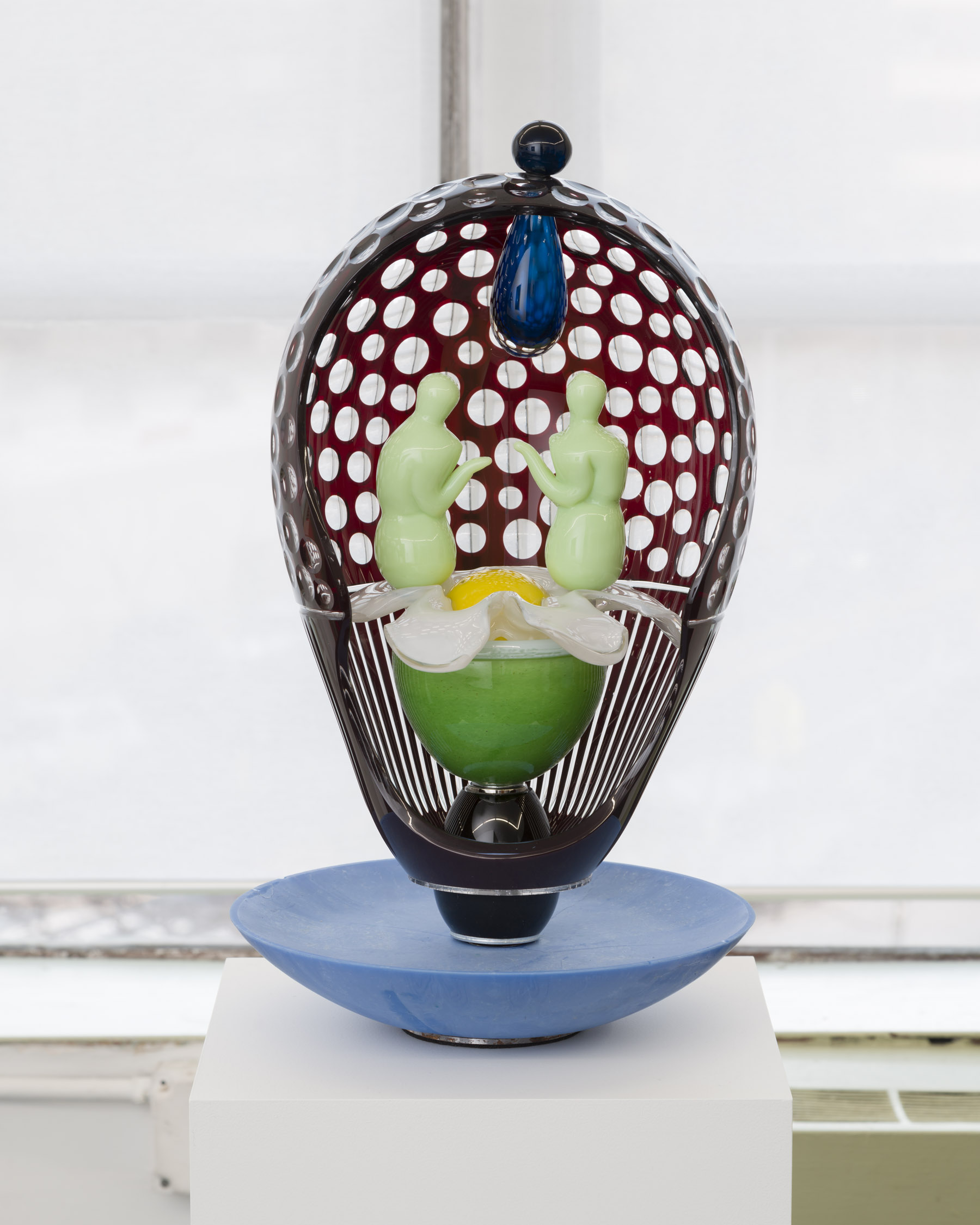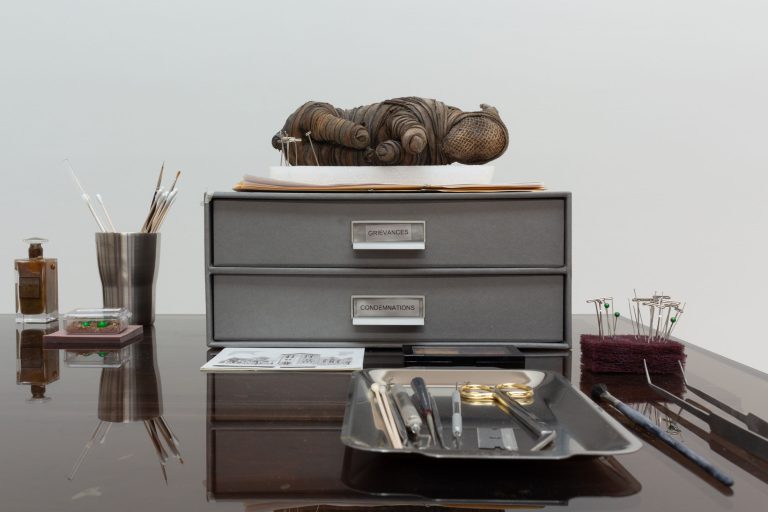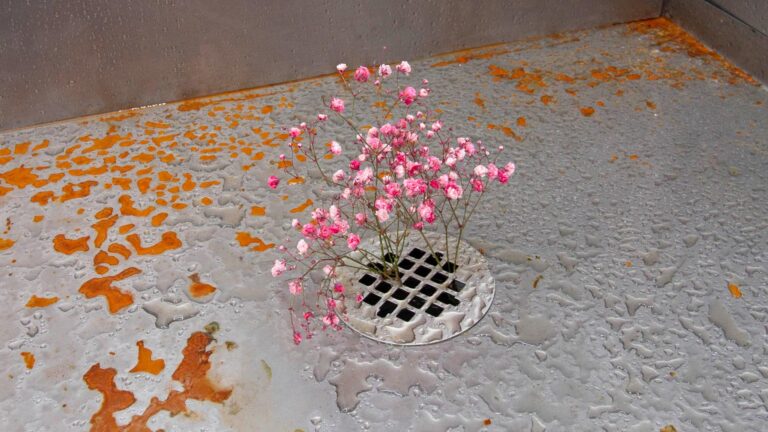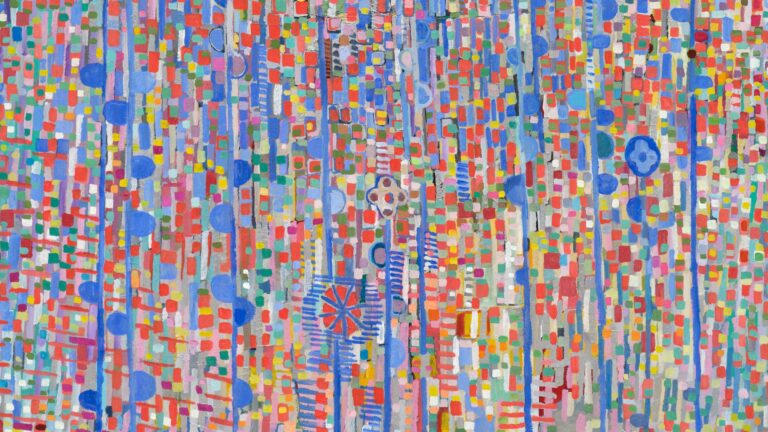Artist: Eric Sidner
Exhibition title: Blue Plate Swimmers
Venue: Laurel Gitlen, New York, US
Date: March 7 – April 13, 2024
Photography: ©Charles Benton / all images copyright and courtesy of the artist and Laurel Gitlen, New York
Laurel Gitlen is pleased to present Blue Plate Swimmers, an exhibition of sculptures and images by the Berlin-based artist Eric Sidner.
The Blue Plate Special is a low-cost meal that was most prevalent in North American diners of the mid-twentieth century. The title of the show merges this routine menu with the psychology of ego immersion, employing a technique of substitution seen in many of Sidner’s works. Free-floating and immersed in an ocean of endless choice, the swimmer here could be anybody.
The work in the exhibition reflects the inheritance of North American pop culture with its undercurrents of spiritual dread and the Doomsday prophets. Wigglesworth’s wildly popular 17th century religious poem, “The Day of Doom”; apocalyptic sci-fi; ghoulish dime novels; and present-day receptions of UFOs (or UAPs), an American gothic tradition whose accounts suggest a fear of the self—it is in these expressions of the unknown where forms of projection double as portraiture. Both serene and foreboding, these fantasies are the two-sided coin of the Numen, its outside and uncertain quality. This is apparent in the sculptures—whose characters are an amalgam of symbols arranged on a plate—and illuminated images, which recall cinematic traditions of painted animation cels.
The images oscillate between astral, oceanic, and inner space, a collapse in distinction that recalls the psychological affinity between these domains. In the absence of any clear orientation, myth and symbols proliferate like rumors. Sidner’s unidentifiable shapes channel this accrued and hyper-personal heritage of the weird and its latent folkloric potential. The images lend themselves to a series of speculations, Marian apparitions, interdimensional imps, and submerged, illuminated creatures gliding along the Mariana Trench. Others imply interiority and the scaleless quality of a memory, phosphorescent images seen with eyes closed, pictured on the back of the eyelids, and centered in the fullness of a void. On the other hand, the image’s reflective surface frustrates any promise of cosmic integration. Instead we are left to glide over its ripples, bumps, and folds.
Spaced out in sequence, the titles of the sculptures come together as Red, Hot, Potato. It is tempting to see in this group gestalt, any number of social or organic formations. Indeed, the work invites it. Their materials (glass and porcelain) and craft suggest the vestiges of another age in tension with their mutant-like forms.
Served up on the blue plate in a jostled arrangement, the first of the characters, Red, wears a brilliant red wig. Popping out the sides are the stalk-like eyes of a crab, jutting out with blue-bones, the stuff of cartoonish heraldry. The suggestion is of sacrosanct boundaries in a state of transgression gradually seeping out of their allotted containers. Like all good memories, it is a chimera, one with a fugitive quality. It is blushing, uneasy perhaps, in the middle of slipping away when you call its name. “Hey Rrrred!?”
The following sculpture, Hot, seems to embody the oyster-like quality of a satisfied perlocution brought about by an irritating sign. It looks like a big dentistry model with the mouth arched back at an angle and the molars exposed and capped by flickering flames. Held in the mouth is a transparent orb–– part-eye, part-punctuation point––mounted by a (hot) hat. Sidner described it as “trying to talk, but the point is trapped in a bubble ” and that the thwarted act of speech “is the cause of an overheating.”
Potato suggests a capsule, stomach, caul, or house that gives way to some imagined ‘bucolic’ scene: a projection of the good life, yet held close into the warmth of the body. But, for all this, it is a vegetable, a potato.
Caught in a variety of nascent states, the sculptures seem to confess to their own symbolic processes in which the sculpture emerges as a fact that was caused by signs. It is the act of interpreting these frozen ‘characters’ that brings them back to life. Reading is resurrection. The character is a retainer that holds the thought for you.
The show’s reference to a largely vanished tradition leaves it open to interpretation as an advocacy for a certain form of nostalgia, and yet this is disrupted by a panoply of awkward guests. In the foreground is the artist’s preoccupation with the metaphysics of containment and its vast unknowable outside.
-Ryan Siegan-Smith, 2024
Eric Sidner (b. 1985, USA) is from Houston, and currently lives in Berlin. He attended the California College of Arts in Oakland, California, where he received a BFA. Eric Sidner has been a guest student at the Städelschule, Frankfurt, Germany as well as a resident at de Ateliers, Amsterdam, The Netherlands (2013). Recent solo and group exhibitions include Laurel Gitlen, New York, USA (2023); Deborah Schamoni, Munich, Germany (2022); Platform for Contemporary Sculpture, Tilburg, Netherlands (2019); Kunstverein Nürnberg, Germany (2017); Laurel Gitlen, New York, USA; and Johan Berggren, Malmo, Sweden (2015).


